Hello everyone, welcome to a series of strategy articles written by Yangzera!
Before we start, a little bit about my background – I was a Brazilian Challenger League of Legends player and LoR is my first card game, and I’ve played it since the announcement of closed beta. I have reached Masters Rank #1 multiple times and topped Seasonals once, with a lot of Fight Night and community tournament wins and tops on my belt as well.
After some research, I’ve noticed that there is a certain lack of content around basic yet difficult to master aspects of the game, so I chose to write my first article for Mastering Runeterra about what is, in my opinion, one of the most important basic aspects of LoR: priority management.
But what even is priority?
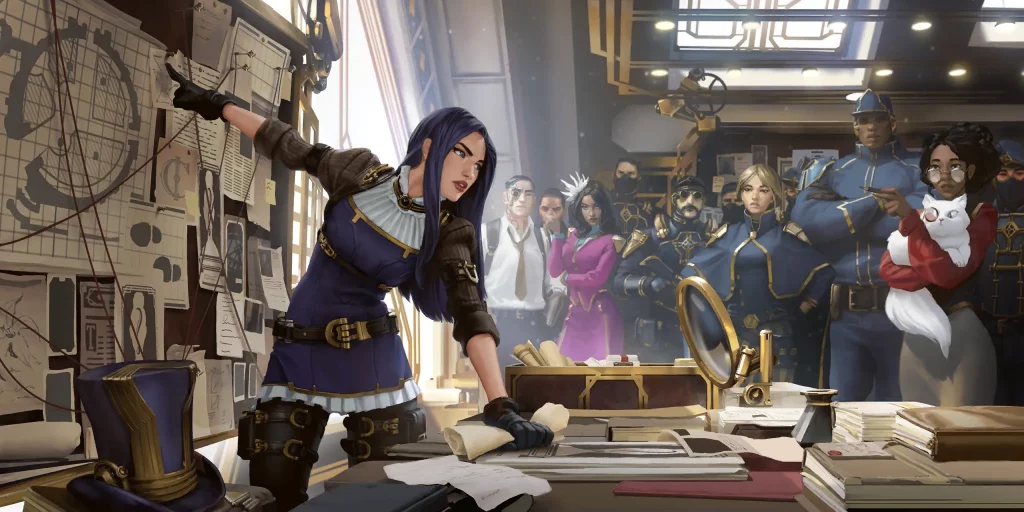
To talk about priority, you need to understand that Legends of Runeterra has different meanings for what is a turn and what is a round.
A turn is defined as an action taken by a player – playing a unit, for example, is considered taking a turn – and a round is defined as any amount of turns taken by both players before both agree on passing, effectively ending the round.
If you’re familiar with chess terminology, you will have an easy time interpreting the following line of play between an Aphelios / Viktor
/ Viktor deck against an Ezreal
deck against an Ezreal / Caitlyn
/ Caitlyn Tri-beam deck:
Tri-beam deck:
1. Pass - Lunari Duskbringer
2. Pass - Pass
3. Lunari Duskbringer Attacks - Pass
Attacks - Pass
4. Pass - Pass
5. Pass - Duskpetal Dust ;Aphelios
;Aphelios
6. Culling Strike - Crescendum
- Crescendum
7. Caitlyn - Pass
- Pass
If you’re not familiar with chess terminology, I’ll give you a quick rundown.
Chess is a fundamentally back-and-forth board game where players make moves to attack each other and take opponents’ pieces. As much as Legends of Runeterra isn’t as easy as chess to interpret this way, take a moment to imagine this line of play happening in your head.
You’ll realize that by the end of the line we’re about to finish round three, even though both players have already played seven turns each. You will also realize that the Aphelios player is attacking on even rounds, and the Tri-beam player, on odds.
You may also notice that the Tri-beam player did not play House Spider on round two, either because they didn’t draw it or chose not to do it.
on round two, either because they didn’t draw it or chose not to do it.
On top of that, the Aphelios/Viktor player chose to play an unprotected Aphelios and also cast Crescendum as early as turn three, instead of holding it for a possible nightfall activation on turn four.
People will often tell you to plan every turn in advance, but I personally tell people to plan every priority in advance. Being able to calculate possible lines between rounds, and preparing to adapt into deviations is key to being able to play your games out in the most effective way.
Breaking a Game Down in Rounds
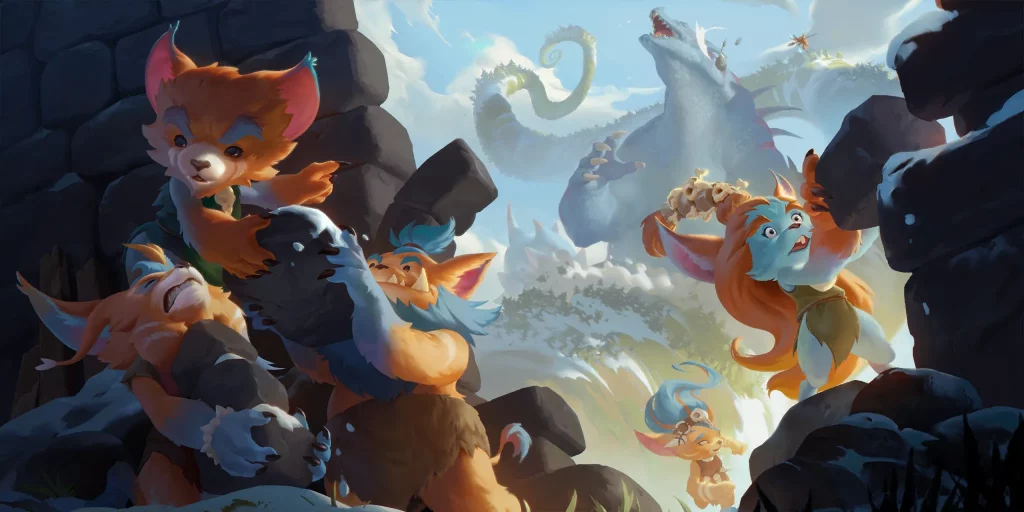
Now that we’ve established the difference between what is a turn and what is a round, let’s dive deeper into how all of this correlates with the main idea – Learning how to learn.
In Legends of Runeterra, I like to look at rounds in a sense of whether it is an attack token round or not, instead of which actual round it is.
If you think about it, most aggressive decks tend to approach the game with a simple idea of “I have X amount of attack tokens to win”. Take Pirate Aggro versus Sun Disc as an example of this idea – the Pirate Aggro player has 3-5 token turns to win the game, and on the other hand, the Sun Disc player needs to survive for 3-5 enemy token turns to win the game.
If you count both odds and even token games, you’ll have an average of the game ending for either side at rounds 6-7, which is usually when the Sun Disc flips (at least before this last balance patch) and the game reaches a state where it will end very quickly in favor of either side.
This method of looking at a game will help you in the beginning of your journey into mastering priority, and will still be useful for more linear strategies, but keep in mind it will not always be a rule!
Can you really tell how many attack tokens you have to win a Targon game?
Or a Tri-beam mirror?
Certainly not – those matchups play out differently and you need to adapt yourself into what your hand looks like as well as your opponents’.
Thinking Outside the Box When Analyzing

Let’s go back to our first example – can you calculate any deviations to those three rounds using as few different cards as possible and make some hand reading considerations?
Ask yourself a few questions:
- Did the Tri-beam player not play their House Spider
 on turn two to have enough mana for both premium plays (killing a possible Aphelios
on turn two to have enough mana for both premium plays (killing a possible Aphelios ,plus developing Caitlyn
,plus developing Caitlyn on curve)?
on curve)? - Does the Aphelios
 player casting Crescendum
player casting Crescendum on round three mean they don’t have a second Aphelios in hand to use the weapon as a Nightfall activator?
on round three mean they don’t have a second Aphelios in hand to use the weapon as a Nightfall activator? - Is the Aphelios player looking for a stronger open attack on round four to maybe force out removal from the Tri-beam player in order to get a safer Viktor
 on curve?
on curve? - Did he even play the early Aphelios to force out removal and improve the “safer Viktor” theme for that game, possibly even saving a Pale Cascade
 so the opponent won’t play around it later?
so the opponent won’t play around it later?
The more you analyze this simple line of play, the more theory can be obtained from it.
Was the Aphelios player simply too reckless by playing him early with no Pale Cascade backup?
Was he planning his next couple of turns in advance to force out a safer Viktor as a more reliable threat and win condition?
Was the Tri-beam player correct by holding House Spider in their hand?
Was a House Spider even contesting the board against a Duskbringer that had already attacked and would be forever saved as a premium blocker for the 2/2 body?
The previous questions can look very easy to answer if the line is analyzed in a vacuum, but as you keep adding variables to the equation, it gets more and more complicated to answer properly.
They are just the beginning of a conversation that both players have throughout a game, and if you still don’t “talk” to your opponent this way yet, you probably should start doing so!
Understanding optimal lines of play and their deviations is a very important aspect of hand reading, and understanding the meaning behind each pass or every unspent mana will help you better anticipate how your opponent will approach the game.
A good way to start this conversation is to ask yourself: Why?
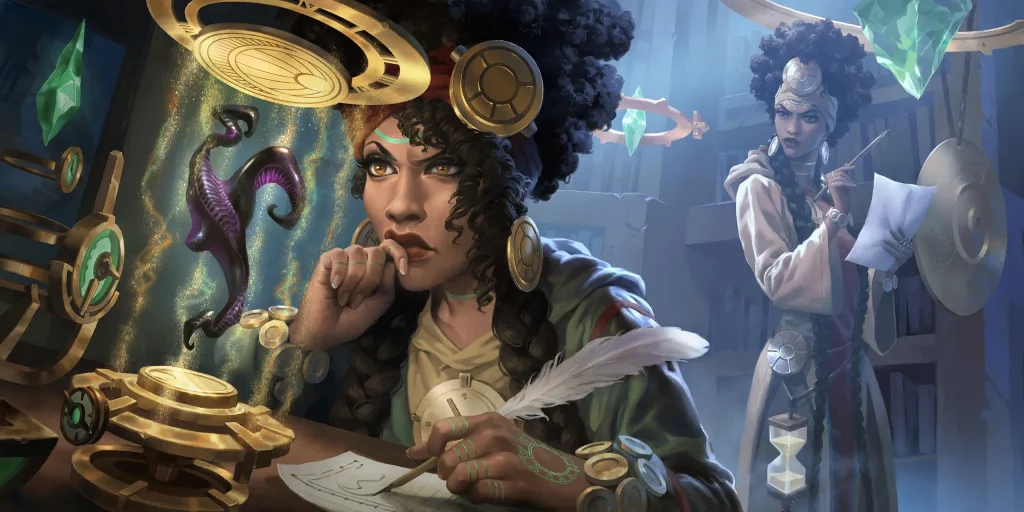
This is good advice not only for LoR but for life as well – when you see something happening, or a decision being made that involves reasoning, the first step is to identify why. If there are more than one reason, analyze deviations and try finding the best one.
If you struggle to find reasoning as to why a deviation is better than another, seek for trustworthy people’s insight and input – if I may suggest, the Mastering Runeterra Discord has an “Ask the Pros” channel for subscribers where you can ask the MaRu Pros any question.
Keep in mind though that, as much as it is good to seek for better player’s insight, at the end of the day your goal should be to become one of them. Use the “ask someone who’s better” card only as a last resort – you should start being able to identify lines and add deviations into your repertoire, much like you would in chess openings.
Also, remember this is a slow process that many top-tier players can’t even fully grasp – some know about it from instinct, but few can turn it into actual digestible theory (and hopefully I’m one of those! =).
Don’t expect yourself to turn into a LoR mastermind overnight and predict five rounds in advance – start slow and steady, build confidence and remember there’s always something to learn, even from the worst “mistakes”.
If you can’t analyze this while playing yourself, seek for a stream and try to do it from the streamer’s PoV. Why did he play this? What would I play instead? Are there any lines we’re missing in the calculation?
Lines and priority in LoR are two concepts tightly associated with one another – once you start analyzing more lines, you will be able to tell the importance of every priority a player gains.
Do you want to give your opponent a priority turn before attacking?
Are they perhaps holding back an Arachnoid Sentry to punish you harder than they could previously?
to punish you harder than they could previously?
Can you hold your own Sentry for an extra priority turn and abuse it after your Spider aggro opponent goes for a Frenzied Skitterer play?
play?
How many priority turns do you have until you or your opponent is threatening lethal damage?
To Open or not to Open
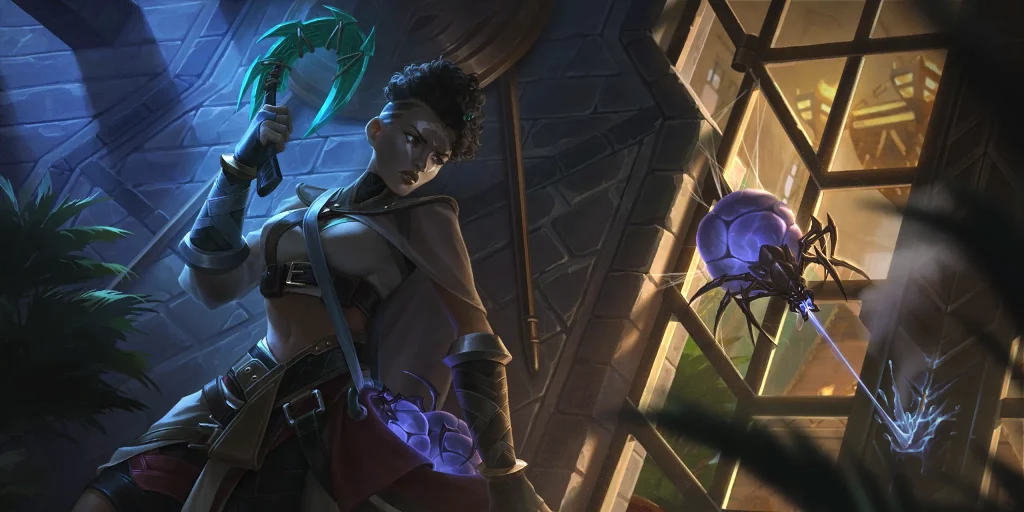
This concept ties in with how you approach open-attacking versus developing your units. Your opponent may punish your first development, but can you develop further into a better attack even after they Arachnoid Sentry you, for example?
you, for example?
Do you have the luxury of playing around a development punish? If you’re the aggro deck, there may not be a next token turn for you to use your units, and they might be dead cards in your hand.
Alternatively, as the control player, can you give your opponent an extra priority turn? Is it a good idea to not use your Vile Feast yet and invite them into using their attack token in a way your hand can punish it?
yet and invite them into using their attack token in a way your hand can punish it?
Imagine the following line as an example:
Your opponent has two Inventive Chemist s on the board, one unit mana and a Legion Rearguard
s on the board, one unit mana and a Legion Rearguard in hand. You don’t fully know about the Rearguard, but you expect it since you know their list.
in hand. You don’t fully know about the Rearguard, but you expect it since you know their list.
You have two mana and a Vile Feast in hand, but no Withering Wail
in hand, but no Withering Wail .
.
Do you go for the Vile and encourage them to develop the 3/2 and take the 3 damage?
Do you go for the Vile and block the 3/2, hoping to draw wail or another vile in the next couple turns?
Do you invite them into an attack and Vile Feast one of the Chemists on the stack to only take 2 damage? All of these plays can be the correct one in different scenarios or different handstates, but the fact that you can identify each one of them helps you play the next priority turns out in your head and visualize the game state you want to end up on, and then choose whichever line will reach a same or similar game state in the end.
Understanding Themes and Playing Around Them
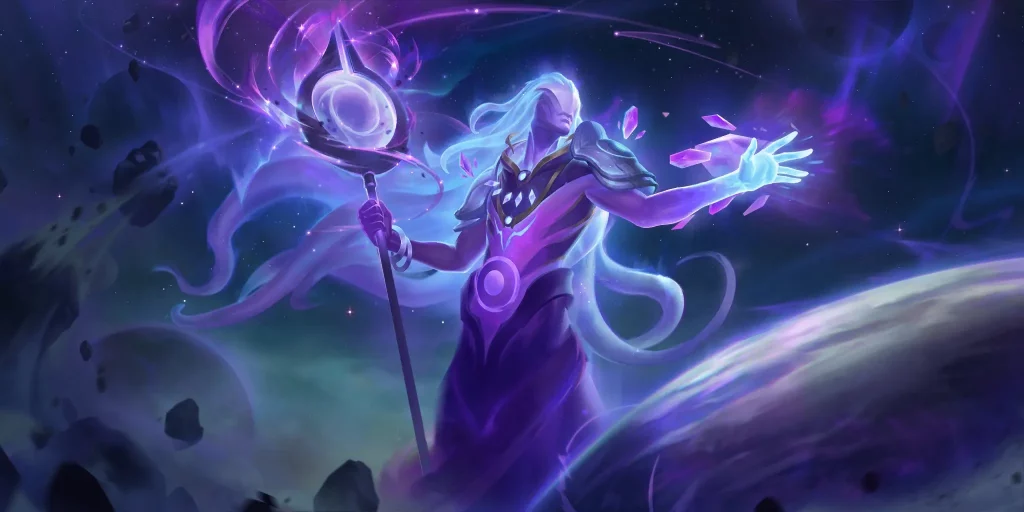
Knowing what is a game state you want to end up on in a set amount of priority turns is also key to winning a game. This is a very important topic and is a skill that will come with experience on a specific deck.
Let’s take a Targon mirror as an example
Many people will tell you that the way to winning a Targon mirror is to force out Cosmic Inspiration as quickly as possible and snowball the board from that point on.
as quickly as possible and snowball the board from that point on.
With this in mind, you can plan your mulligan and turns with the theme “I need to cast Cosmic Inspiration” and play for that win condition. Maybe you pick The Traveler from your Solari Priestess
from your Solari Priestess instead of removal options to dig deeper into Evokes, maybe you even let your opponent deal early damage to cast the Starshaping
instead of removal options to dig deeper into Evokes, maybe you even let your opponent deal early damage to cast the Starshaping you kept in your opening hand as soon as possible, to follow your initial plan.
you kept in your opening hand as soon as possible, to follow your initial plan.
Depending on the regions matchup, maybe you don’t play The Messenger or The Trickster
or The Trickster you found from an early Spacey Sketcher
you found from an early Spacey Sketcher , to ensure your opponent won’t remove them – that way you can guarantee the Celestial Behold for when you eventually do find the Cosmic Inspiration
, to ensure your opponent won’t remove them – that way you can guarantee the Celestial Behold for when you eventually do find the Cosmic Inspiration .
.
If you did not find Cosmic Inspiration, is it a good idea to start forcing out the game with an early The Great Beyond instead? Maybe you pick Moonsilver
instead? Maybe you pick Moonsilver from a future Sketcher you play to speed up the clock you’re putting your opponent on. Those are all game plans you can go for starting as early on as your mulligan, and adapt them over time depending on what you draw and what are your evoke pulls.
from a future Sketcher you play to speed up the clock you’re putting your opponent on. Those are all game plans you can go for starting as early on as your mulligan, and adapt them over time depending on what you draw and what are your evoke pulls.
This is a concept that goes beyond general matchup analysis or data, and is a way to navigate matchups – especially bad ones – and help you find victory in scenarios that don’t play out the intended way.
Adapting your playstyle to the game and hand states while identifying which are the themes the current game is being played on is a skill that carries over to any deck you pick up, so try practicing it on decks you’re most familiar with first, since you know more lines off the back of your head.
Having a deep card pool and general meta knowledge is also important here – you don’t want to waste time calculating lines around cards that are not in your opponent’s deck, or are not common in the current meta.
Finishing Up
Alright, and that’s today’s article!
It was an absolute blast to be able to write this piece for Mastering Runeterra and I hope it could be of any use for you, regardless of how skilled you are.
If you made it this far into the article, thank you so much! Feel free to reach out to me in Discord (Yang#4481) or Twitter (@yangzera) to give feedback or talk about any ideas for future articles, and I hope you have an amazing week!
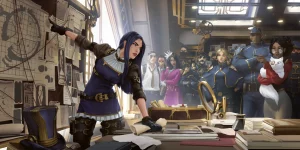


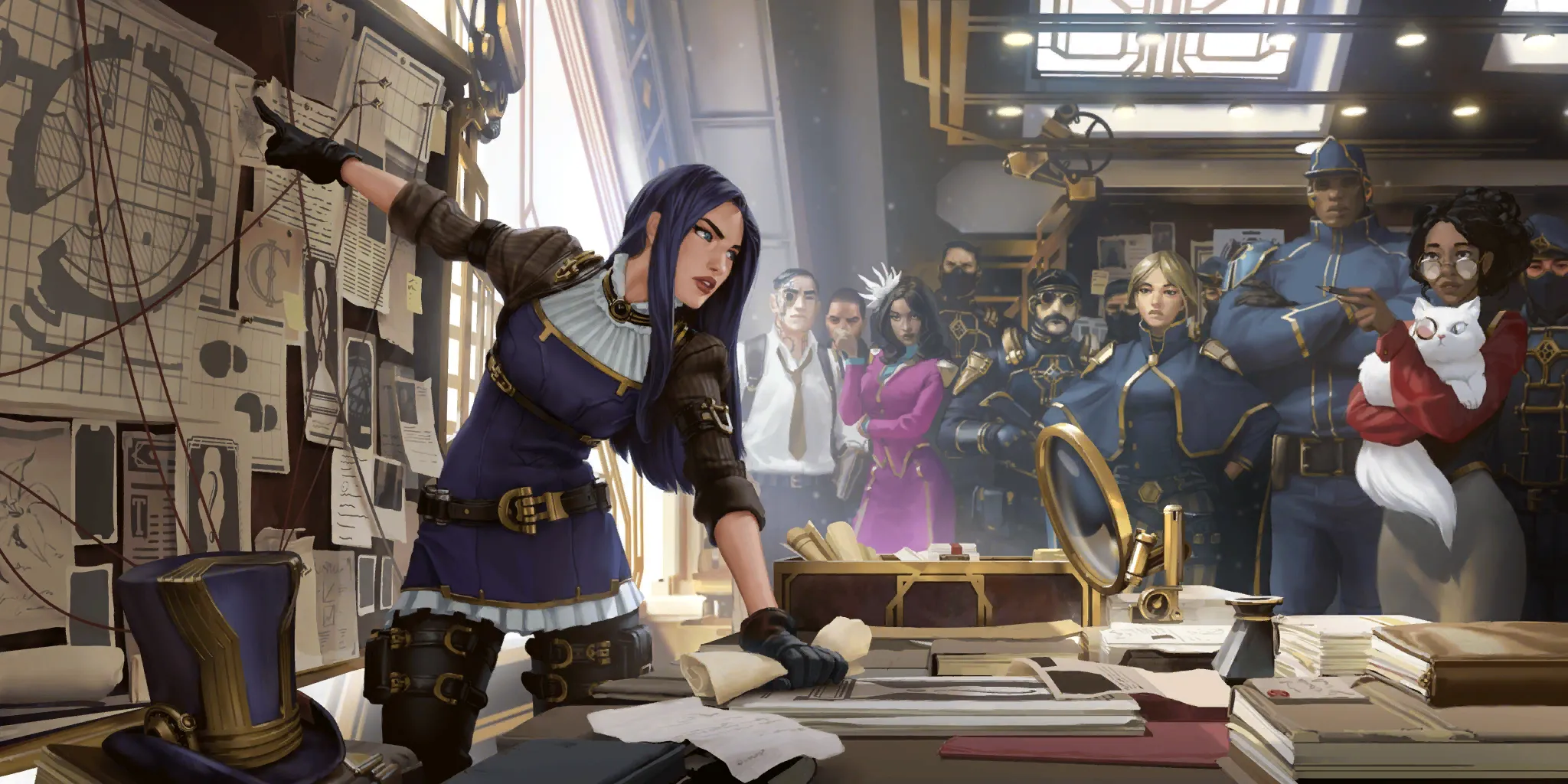
 so the opponent won’t play around it later?
so the opponent won’t play around it later?